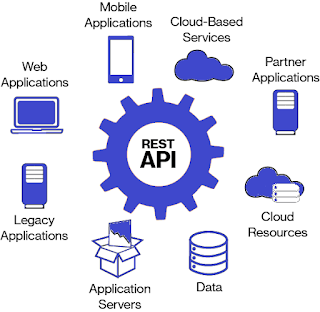Benefits of Restful API in Web Development Over SOAP
Until not long ago, standard data transfer protocols offered great capabilities but were also difficult to handle.
SOAP (Simple Object Access Protocol) was a prime example. However, the use of a simpler alternative such as REST (Representational State Transfer) has grown exponentially.
Nowadays, there are many applications and projects that use a REST API, and hundreds of companies that do business thanks to its features.

This interface between systems using HTTP to receive data or perform operations over it in various formats (such as XML and JSON) allows for much faster handling. Nowadays, there are many applications and projects that use a REST API, and hundreds of companies that do business thanks to its features. It provides them with horizontal growth and they achieve a more efficient and logical API creation for Internet services.
In SOAP, which uses XML data transfer, operations are defined as unidirectional WSDL ports, with many instances of the process sharing the same operation. In REST, however, operations are defined in messages themselves, and there is a single direction for each instance of the process. Components are not coupled in the same way in both cases; while in SOAP they are tightly coupled, in REST that coupling is weak.
Why choose REST?
Scalability :
This protocol stands out due to its scalability. Thanks to the separation between client and server, the product may be scaled by a development team without much difficulty.
Flexibility and portability :
With the indispensable requirement for data from one of the requests to be properly sent, it is possible to perform a migration from one server to another or carry out changes on the database at any time. Front and back can, therefore, be hosted on different servers, which is a significant management advantage.
Independent Feature :
Due to the separation between client and server, the protocol makes it easy for developments across the various areas of a project to take place independently. In addition, the REST API adapts at all times to the working syntax and platform. This offers the opportunity to try several environments while developing.
REST advantages over SOAP :
This interface overcomes the disadvantages SOAP exhibited, such as the need for clients to know the operation semantics as a pre-requisite for its use, or the need for ports for different types of notifications. In addition, with a few operations, REST can handle many resources, while SOAP needs many operations to accomplish that. These are its advantages:
- It is usually simple to build and adapt.
- Low use of resources.
- Process instances are created explicitly.
- With the initial URI, the client does not require routing information.
- Clients can have a generic ‘listener’ interface for notifications.
While SOAP focuses on the design of distributed applications, REST does so on scalability and large-scale performance for distributed hypermedia systems.



Comments
Post a Comment